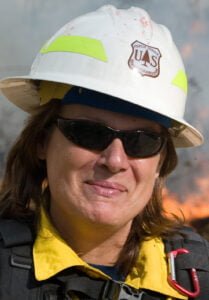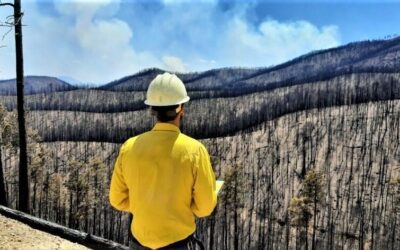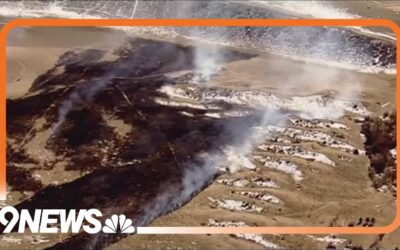Wildland firefighter training has come a long way, which is a good thing to remember when you get an attack of old-timer-itis. Three years ago, I retired from the fire service after a 44 plus year career. Since then I’ve been involved with a small Fire District, so I stay connected to the business and the firefighters. As I got further along in my career, I heard my contemporaries romanticizing and reminiscing about the “good ‘ol days”. If I’m not careful I too can slip in to old firefighter mode and complain about how things are now compared to how it was when I started in my career.
Let’s think about how it was in 1974 (my first season). I received no wildland firefighter training when I came on the job. The district fire training had already taken place and it wasn’t necessary for me to know anything about fire behavior or basic suppression tactics. I was put on a crew and told to just “shut up and dig”. I was the second to the last person in line on that hotshot crew. You can’t get any lower than I was. Shut up and dig. Yep, that’s all I needed to know.
A year later I was the operator on a small Forest Service engine. Still no wildland firefighter training, but I learned a lot with the shots. That second season, when there was a large fire on the District, the Fire Control Officer took me off the engine and put me in charge of the local District crew made up of recreation workers and “ologists
Yea, how are you feeling about the good old days so far?
On the job wildland firefighter training
The next season, after a lightning bust, the Forest helicopter, a Hughes 500 dropped me and another firefighter off at a small fire many miles and across several deep canyons from the nearest road. Of course we didn’t have a radio. Why would 2 people fighting a fire miles from any other resources need a radio? As the helicopter dropped us off near the fire, the helicopter crew member kicked out a couple of cubies and shouted… “We’ll come back and get you in a couple of days”. And off the helicopter went as we engaged the fire.
I remember the feeling watching the helicopter fly away, hoping the crew could find us in 2 days. And hoping neither I nor the other firefighter injured ourselves in the meantime. I mean, who needs a radio on a remote active brush fire?
When I switched over to a structure fire department we were still riding on the tailboard. It was fun. Well, it was fun if it was warm out and not raining or snowing. A few years later I became the Safety Officer for that Department. Being concerned for the tailboard firefighter’s safety, I made sure we had safety straps installed and the new policy stated that the engine couldn’t move unless the tailboard firefighter had the strap around their waist.
I’ve listened to old, retired firefighters fondly remembering and longing for the good old days. But I remember standing on the tailboard and just hanging on while the snow whipped around me and I’m trying to stick my head under the canvas tarp covering the 2.5” hose bed to stay warm. My toes were always numb within minutes. Engines don’t even have tailboards anymore.
Air Bottles and Radios?
I remember fighting wildland fires for years before receiving any training. By that time, I had mostly figured it out for myself. But what a way to feel valued by your employer.
You have all seen the pictures of the grizzled tough firefighter coming out of the structure fire. Their face black, smoke and steam coming off of the turn outs that might not have been washed but once or twice in their life time. There isn’t an air bottle on their back and if there is, their mask is hanging from the regulator. Yea, who needs lungs in retirement?
Our fire seasons have gotten longer and the fires have gotten bigger and meaner than anything us old timers saw back in 1975. We no longer let people ride on the tailboard. Everyone has to be sitting in a seat and wear a seatbelt. We would never consider dropping people off at a fire without a radio. They might have to climb the ridge to reach a repeater, but they’ve got some chance of communications with dispatch. Can you imagine taking a rookie firefighter and putting them on the line with no training at all? How about taking that same rookie the next year and having them operate the engine and fill in as a crew boss?
Yea, those were the days alright! I moved up through my career and was the Assistant Regional Fire Director for Operations when I retired. I spent years working as an Ops Chief on type 1 and 2 IMTs. And I’m so impressed with our current firefighters. You are more educated, better trained, better equipped and outperform those of us old dinosaurs from the 1970s. I’m more proud of our current firefighters than I can possibly say.
Lifelong Learning and Wildland Training
Over the years I’ve participated as an instructor at many S, I and L courses. Teaching and mentoring were my favorite activities. It’s where I could talk to the firefighters who worked in my organization without the haste and pressure of being on an incident. It was also more relaxed than when I stopped by a station and wanted to chat with the firefighters on duty. In a break out session during a class, they were more relaxed and likely to speak up. And I didn’t have the pressure like I might have had if I was on an incident. It was during these interactions that I became even more impressed with our workforce. The level of professionalism and expertise always impressed me. I know as fact that the GS-7 or 8 Captains were always thoughtful and wanting to learn and improve their performance.
I’m launching this column hoping to share some leadership lessons, entertaining stories and some of the perspective that comes with more than 40 years on the job. I’m not saying we don’t have issues and concerns. We do. And there will be more about those in upcoming articles. But for now, know that this old dinosaur appreciates our current crop of fire leaders. You should all be proud.
You can listen to an audio version of this article at http://bobbieonfire.com/2020/09/26/57-these-are-the-good-old-days/.

 Bobbie Scopa started her career as a seasonal firefighter in 1974. After graduating from Arizona State University, she went on to work in fire and natural resource management. Eventually she left the wildand agencies to work full time for a structure fire department. She finished her Masters in Forestry at NC State then went back to the US Forest Service and BLM eventually becoming the Assistant Regional Fire Director in Region 6. Bobbie has spent many years working as a type 1 and 2 Operations Section Chief. You can listen to Bobbie tell audio stories from her long career at BobbieOnFire.com. She has also recently completed her memoir titled “Both Sides Of The Fire Line”. It will be available through Chicago Review Press late summer of 2022.
Bobbie Scopa started her career as a seasonal firefighter in 1974. After graduating from Arizona State University, she went on to work in fire and natural resource management. Eventually she left the wildand agencies to work full time for a structure fire department. She finished her Masters in Forestry at NC State then went back to the US Forest Service and BLM eventually becoming the Assistant Regional Fire Director in Region 6. Bobbie has spent many years working as a type 1 and 2 Operations Section Chief. You can listen to Bobbie tell audio stories from her long career at BobbieOnFire.com. She has also recently completed her memoir titled “Both Sides Of The Fire Line”. It will be available through Chicago Review Press late summer of 2022.


